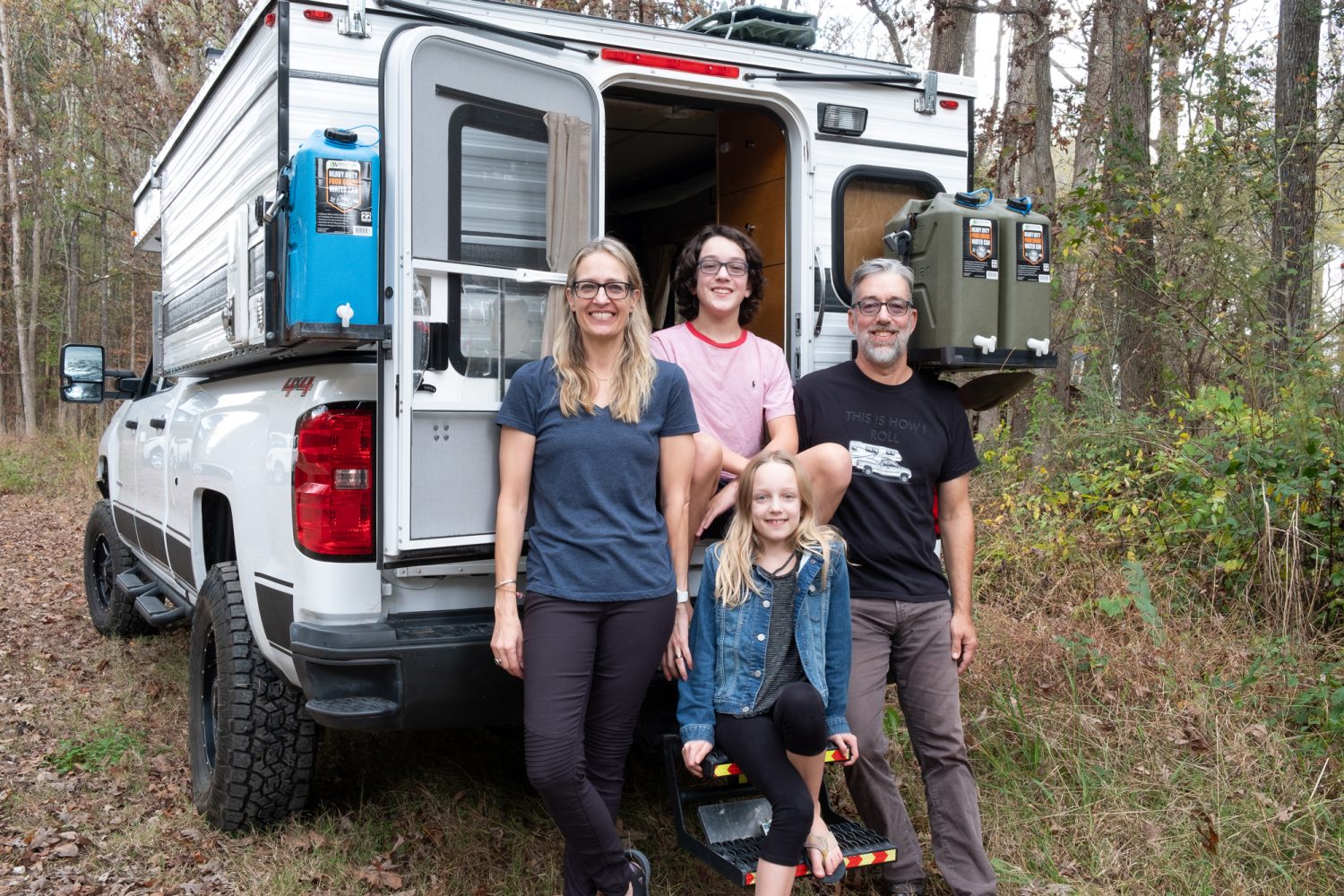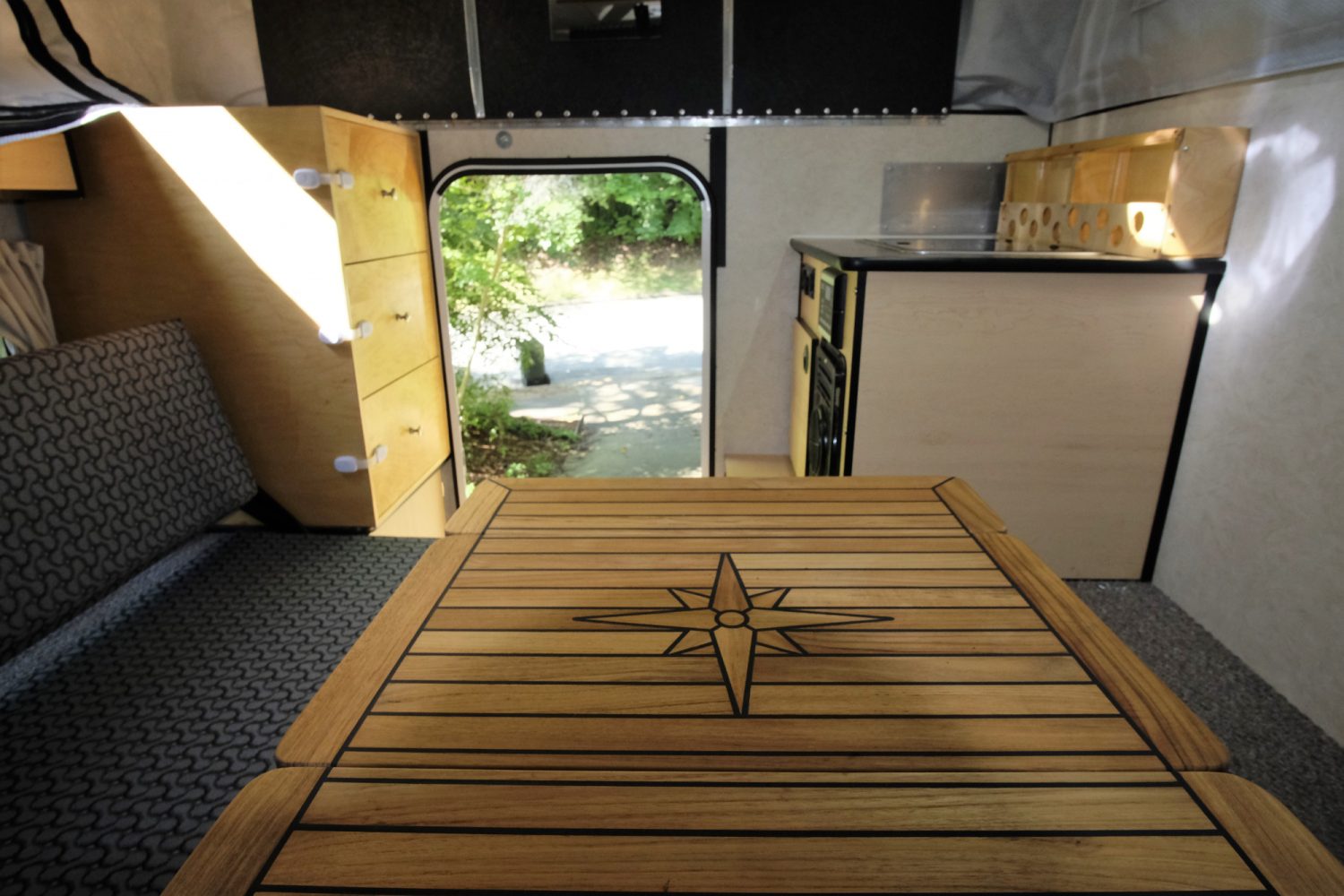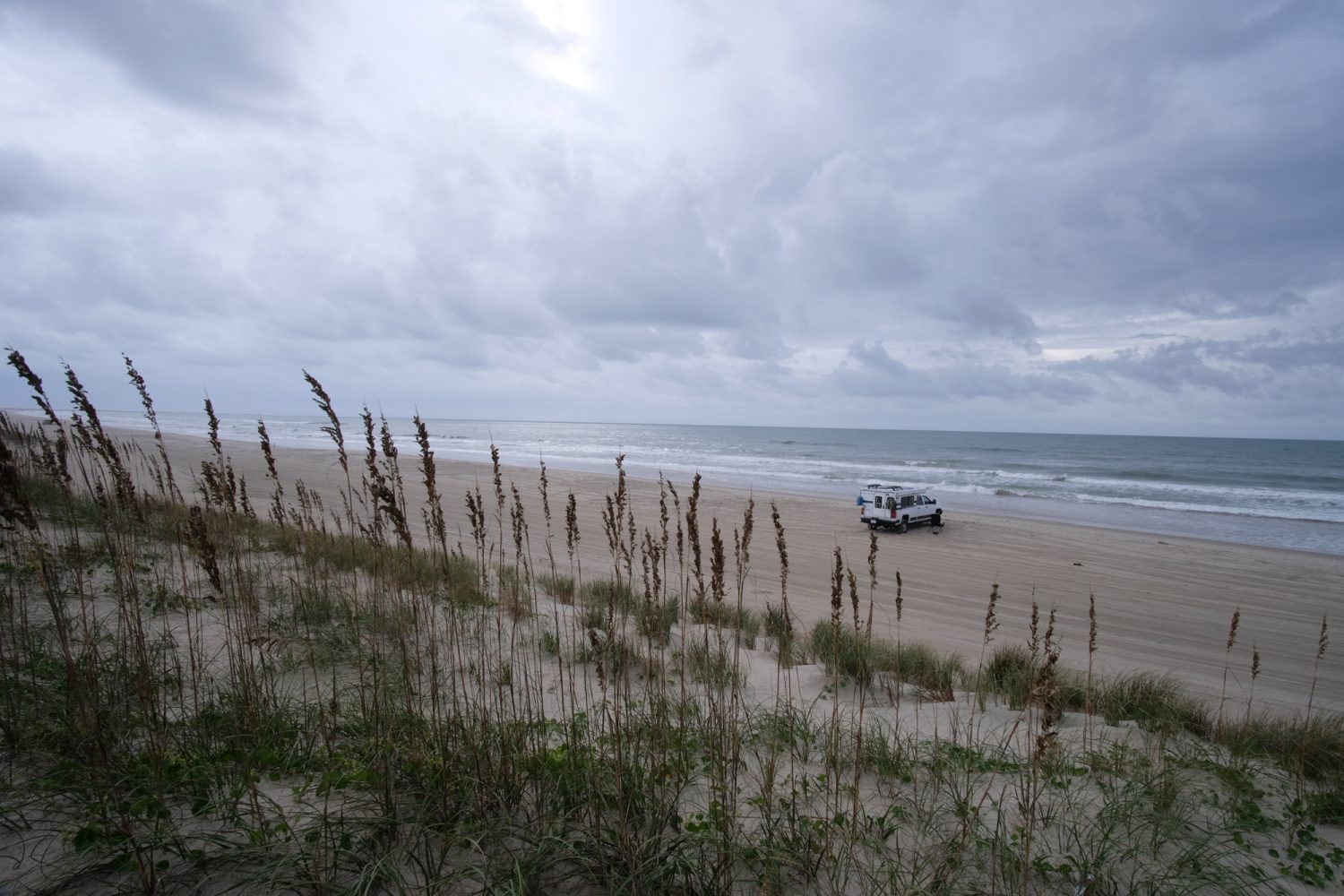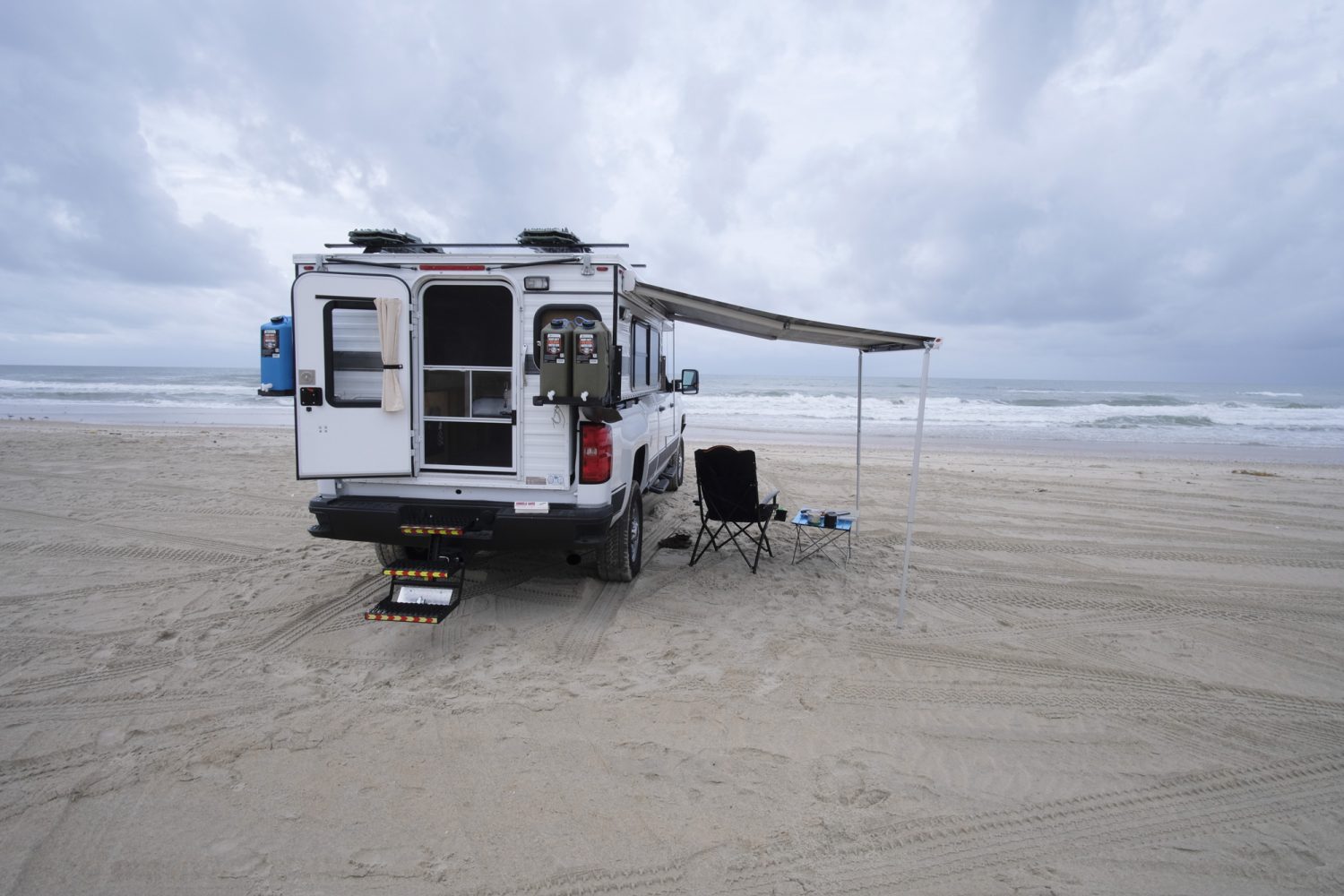Editor’s Note: This article was written by Christian M. Simon and Phoebe P. Simon
Are you planning to overland? Will you cover significant distances and camp in remote places, maybe accompanied by kids, pets, kayaks? Have you invested in a rig with still-unfamiliar anatomical parts such as recovery points, solar controllers, and onboard air? Then you are a lot like us and just as urgently in need of the venerable Shakedown Trip.

Okay, we had to look it up. Shakedown, according to Miriam-Webster’s, can mean quite a few things, all of them potentially relevant to overlanding:
1: an improvised bed
2: a boisterous dance
3: an act or instance of shaking someone down, i.e., extortion
4: a thorough search
5: a process or period of adjustment; and,
6: a testing under operating conditions of something new for possible faults and defects and for familiarizing the operators with it

The beds in our truck camper are somewhat improvised, so there’s a possible shakedown. A long day driving and yelling at the kids will probably end with a couple too many beers and a boisterous dance. Extortion with or without a thorough search is almost a given in some areas we will be traveling. But we’re guessing it’s #5 and #6 that overlanders typically aim for with a shakedown trip, that is, a process or period of testing and adjustment to improve the performance, comfort, and safety of an overlanding rig and associated equipment before hitting the road for real.

That’s been our goal anyway. With half-a-dozen shakedown trips under our belt as we prepare for a year-long journey from the USA to Panama and back, it’s been a revealing process, exposing key weaknesses and oversights in our setup. Here, based on our experience, are five general rules of thumb worth considering in your own efforts to maximize the value of the indispensable Overlanding Shakedown Trip:
1. Keep a Written, Evolving List While on a shakedown trip, regularly check in with yourself and your travel partner(s) to identify gaps, faults, and problems in your setup. Write down the things you agree on. On our list after our first shakedown trip were 20 items/issues that needed addressing. They included things we simply forgot to bring, such as a saw, an ax, decent cooking pots, dog bowls (yep, forgot those), a camp lantern, bug spray, and paper towels. More critical were the issues with our rig’s accommodations, most notably our mattresses. These seemed relatively adequate when we tested them for three seconds at the time we bought the rig. But in the context of a proper shakedown, where the eerie sounds of nature or partying neighbors will sap your capacity for sleep, our mattresses suddenly turned to a bed of spikes. We have since invested in quality inflatable air mattresses and have never looked back.
2. Mix It Up Commit to several shakedown trips in diverse terrain, weather conditions, and social situations. Different environments will reveal different limitations and oversights. Navigation equipment and skills may work well in one setting and not another. Weather is critical to overlanding success and safety; it should virtually dictate how many shakedown trips you do. For instance, only on our fourth shakedown trip did we experience a major storm, with raindrops the size of passion fruit pelting our pop-up camper roof and sides. Gratefully, we experienced no leaks, a key reassurance. But a muddy swamp formed outside the back of the rig, which the children greatly enjoyed tracking inside and across the camper floor. So we needed a solution for that, a resilient mat that could be staked down to keep mud at bay. We also exposed the rig and ourselves to a crowded RV park and campground, knowing this would be occasionally unavoidable. Here several surprises greeted us. The privacy tent in which we set up our portable toilet was see-through—that needed addressing. On the positive side, we found that our rooftop fans were not only good for ventilation but also for drowning out ambient noise. We made a point of procuring the spares needed to repair the fans should they break down. Shakedown trips can highlight surprise benefits of your equipment, as well as its limitations.

3. Experiment With The Big Stuff It took us four weekend trips and several bruised shins to realize that our sleeping arrangements needed to and could be modified to allow for better nighttime visits out of the camper. A factory-installed rollover couch left very little room to maneuver without injuring ourselves or the kids when trying to exit the camper at night. It took us a while, but we eventually summoned the courage to disassemble and remove the couch entirely. The inside of the camper took on new potential. We won space to create separate bunks for the kids, leaving ample passage to exit the camper when everyone else was asleep. Sometimes innovations that seem to have a natural place in our rigs, like a rollover couch, are a hindrance to our specific needs. Here the shakedown trip once again demonstrates its value, allowing time and space to make significant design changes that may not be feasible once you are en route for real.
4. Weigh Your Rig Experienced overlanders can win barroom bets guessing the weight of various expedition rigs. We novices, however, will be well advised to defer to the brutal honesty of automated vehicle scales. Shakedown trips result in changes which often add weight and irregular mass to a rig, leading to poor handling, loss of efficiency, and possible legal violations. The rig’s previous owner had passed along documentation showing that the rig recently weighed in at 7,460 pounds (4,260 at the steer axle and 3,200 at the drive axle). This provided us with a baseline. Changes we made between Shakedown Trips #1 and #3 resulted in a total of 9,380 pounds (4,420 at the steer and 4,960 at the drive axle). An off-road steel bumper, beefier control arms, 15 gallons of added water, and various odds and ends made up the extra weight. With a GVWR of 9,900 pounds, our rig weight was still okay, but clearly, we needed to taper off on our intake. The moral of the story is that you can minimize some of the fundamental risks of overlanding—breakdowns, accidents, costly fines—by incorporating weight checks into your shakedown routine, as well as later (once you are on the road) when you inadvertently goose up with bigger tires, tourist tchotchkes, and the like. You can hop over to here to get more information on traffic laws.

5. Enjoy Your Shakedown Trips Shakedown trips are as real as any other trip. Enjoy them, learn from them, and use them to strengthen your resolve for the Big Trip. So much can get in the way of major travel plans: family, finances, pandemics. It’s easy to lose sight of the ultimate objective in the tangle of preparations and uncontrollable factors facing trips and expeditions. Shakedown expeditions help us move forward by rekindling our drive and passion for overlanding. Off-the-grid relationships, unpolluted night skies, testing conditions—these are among the reasons we overland. Shakedown trips iron out rig and equipment wrinkles but also keep us connected to these deep motivators.


